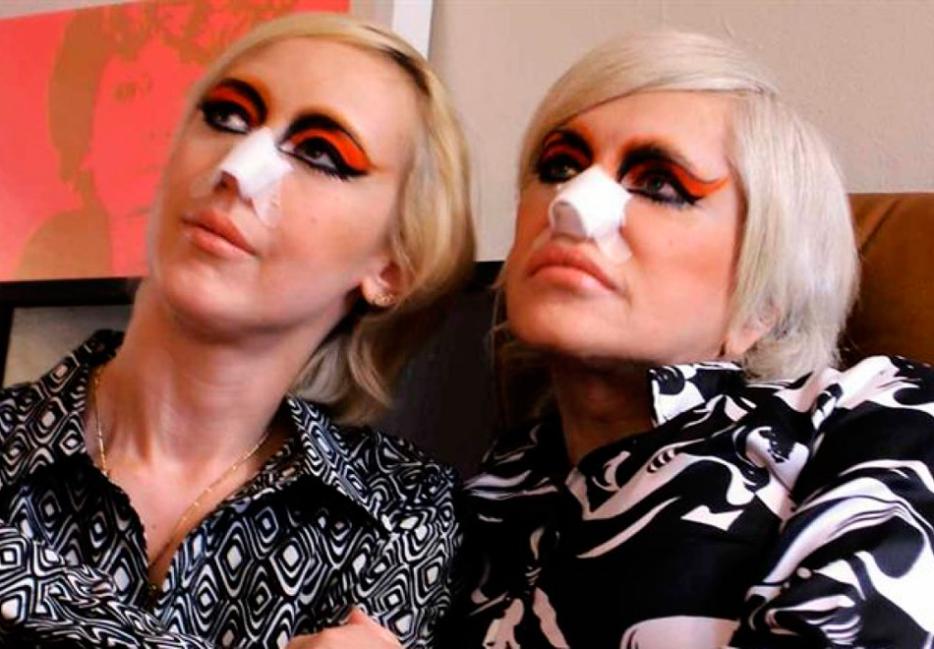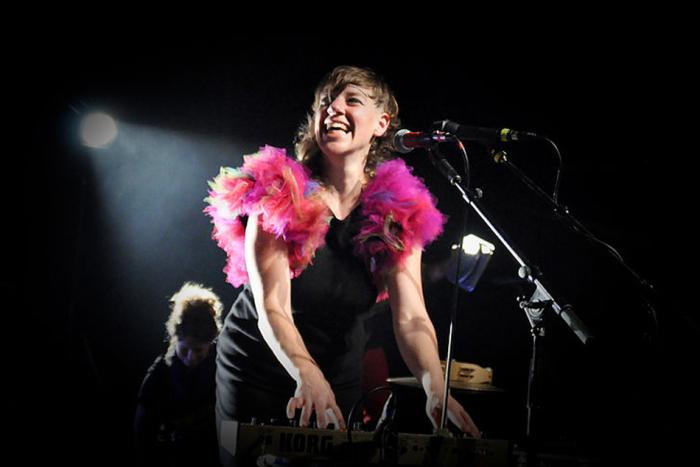“John and Yoko today entered the London Clinic for a series of sex-change operations which, if successful, would make them the first married couple in history to completely reverse their marital roles,” read a press release presented to the London Evening Standard in 1970. “If the massive hormone injections are successful Lennon will become a woman, while Yoko will become a man. The Lennons want to become the world’s first unisex family.”
The date was April 1, just over a year after John and Yoko had wed in Gibraltar and honeymooned in bed at the Amsterdam Hilton, with the world as their guests. The world didn’t understand them, but the world wouldn’t leave them alone, so—like Kimye after them—John and Yoko had turned their relationship into a public performance: appearing at Royal Albert Hall in a giant bag, bedding in for peace, and now, apparently, flying in surgeons from Los Angeles “to demonstrate once and for all our complete love for each other,” the release quoted Lennon. “We are doing it for peace and because ‘Instant Karma’ is slipping down the charts.”
It was an April Fool’s joke, obviously, engineered by a Standard writer and friend of John’s; as biographer Hunter Davies notes, the former Beatle had not been offended. The stunt might have seemed metaphorically accurate: John and Yoko did form a two-headed public entity, and the model partnership they performed became more inspiring, arguably, than any of their peace projects. But there’s a difference between performing a creative partnership for an audience and turning the partnership itself into a creative project. JohnandYoko were more about the first than the second; for starts, they never did merge surgically.
In 1993, Genesis P-Orridge, artist and frontman of the bands Throbbing Gristle and Psychic TV, was staying in New York at the home of a friend, who worked as a dominatrix. He’d been sleeping in her dungeon when a beautiful, lithe woman appeared in the doorway, dressed all in ’60s clothing, which she shed for fetish gear: this was Jacqueline Breyer, aka Lady Jaye, a performer and registered nurse by day. P-Orridge began praying that they’d end up together. Following an impromptu date at a sex club later that evening, they did.
Over the years, as their relationship deepened, P-Orridge and Breyer realized they weren’t content to be just individuals united. So, in 2003, they began a series of surgical procedures to match appearances—cheek implants, breast implants, a little lipo, an added birthmark—on the way to becoming one entity they called the Pandrogyne.
Breyer died suddenly of stomach cancer in 2007. “She lives in the immaterial dimensions,” P-Orridge, who goes by an altered female pronoun but refers to h/erself in plural, said in an interview for the podcast Love + Radio. “We live in the material dimensions, and the two of us together are one being.”
Pandrogeny had been both a way of life and an art project, documented through photographs and video; a 2011 documentary, The Ballad of Genesis and Lady Jaye, was the product of a seven-year collaboration between director Marie Losier and her subjects (Breyer passed away during filming). The project wasn’t about gender, P-Orridge said in the Love + Radio interview, but “absolute intimacy” and transcendence—becoming “a third being, not just a third mind.” Maybe about is irrelevant. P-Orridge and Breyer’s labour was the elevation of a relationship, which is ephemeral and mundane, to an artwork, which is permanent and divine.
“There was this huge erotic, emotional relationship, and from there came the work,” said performance artist Marina Abramović to interviewer Janet Kaplan, about her partnership with the German artist Ulay, which lasted from 1976 to 1988. “To me it was much higher to work with somebody else than to work by myself because the main problem in this relationship was what to do with the two artists’ egos. I had to find out how to put my ego down, as did he, to create something like a hermaphroditic state of being that we called the death self.” That third self created the work, which found them staring at each other for hours across a table; breathing into each other’s mouths until they both collapsed; walking from opposite ends of the Great Wall of China to meet at the centre and say a final goodbye.
This is not work inspired by a relationship, nor an abstraction thereof: the relationship is the work, or the work is a way of submitting the relationship as art. And with the exception of the Great Wall Walk, it all seems very unromantic to me.
*
Which is strange to say. I’ve always idealized the creative partnership, and I’m very attached to an ideal of romance that often strikes me as just as good, if not better, than the real thing. I think the second half of this song sounds exactly like romantic fervour, and unlike romantic fervour it has never prevented me from sleeping, reduced me to sobbing jags at my desk, or induced a sinus infection so severe that my tears turned green. Relationships take you away from yourself, partners leave you, partners die, and connection is hard enough to find at all. But you can depend on art as a substitute.
Furthermore, it’s disturbing, this idea of fusing with one’s beloved—not in the heat of passion but as a lifestyle, so that buying produce becomes a hobbling three-legged race to the spinach tub. Eroticism is supposed to lie in difference. Overfamiliarity, I thought, bred revulsion. What is romantic is Abramović’s account of her first meeting with Ulay, on the birthday they share, during which they had dinner, went back to his house, and stayed in bed for ten days. “Back at home,” she told Judith Thurman in The New Yorker, “I get so lovesick I cannot move or talk.” Romance lies in the anguish of separation. Couplemorphing, on the other hand, seems like the bogeyversion of dependency, which is both unsexy and wildly uncool.
As a romantic model, mutual absorption (the “death self”) seems outdated, given how much we tend to lionize the individual. Mutual self-sufficiency, embodied by the likes of Beyoncé and Jay-Z—whose relationship is a dream of productivity without bed death—is a much more tasteful ideal. Ideals, by the way, allow you to opt out of the whole painful, compromising business of relationships altogether: venerate famous couples, pine away to your favourite songs, get all the feeling you’re after without the risk of springing a leak in your self. It’s a deranged and solipsistic way to live—for your needs alone, scavenging the outside world—but it’s safe, and unrevolting.
This is what makes Pandrogeny so compelling, by the way: it’s a little revolting. Intimacy is a bit of a taboo. Intimacy is a fetish!
*
The relationship-artwork is not an idealization of love, not a view of love from a distance, but an attempt to hoist one particular love to an ideal plane. It’s not romantic because it’s too specific. Relationships are closed systems; by nature, they are alienating to everyone who’s not in them. To observe one closely is to be steeped in a world that’s not yours, like waking up in a room with wallpaper you’d never have chosen and a human odour you haven’t attached to anyone. Take, for example, Bob Flanagan, “supermasochist,” the poet and performance artist who passed away in 1996 from cystic fibrosis. From childhood, masochism had offered him a different relationship to pain. In public, it became his work; in private, it formed the foundation of his 16-year relationship with Sheree Rose, which also became work in public.
“I had been photographing and videoing Bob since we met in 1980,” Rose told interviewer Ryan Holladay in 2011. “I was documenting him because I found him to be the most fascinating person I had ever met. He had told me that he wasn't expected to live more than two years and I felt that I wanted to capture as much of his extraordinary talent and personality as possible and share it with the world. Of course, he lived for another sixteen years—and the documentation of our relationship became more and more public.” Much of this documentation went into Sick: The Life and Death of Bob Flanagan, Supermasochist, the film released a year after Flanagan passed away.
Flanagan and Rose’s relationship wasn’t about merging identities, more the opposite: negotiating and enacting roles relative to one another. To watch them enact those roles might not be your pleasure. In a 1994 video, Autopsy (shown in Sick), Flanagan lies naked on a slab while Rose, wearing a surgical apron which, at some point, acquires a few drops of blood, demonstrates certain features of their physical rapport: she slaps the “nice, fatty part” of his cheek; pierces the skin beneath his dick; grazes his shaft with the blade of a knife he bought her as a gift; inserts a ball into his ass, after coaxing him to loosen his sphincter. What stays with you is the way she rubs his back between blows, kisses the back of his neck as he lies convalescing. Sick is less about masochism as such as it is about care.
Bob and Sheree are not the Captain and Tennille; Sick is not Double Fantasy, by which I mean the aspirational element is muted. Generally speaking, there are few things more off-putting than an intimacy that’s not yours. Still, watching Sick, or The Ballad of Genesis and Lady Jaye, or even reflecting on the John and Yoko saga, you understand that relationships are great subjects for creative work because relationships are creative work. An attraction, like an idea, contains its own possibilities, and works best when it’s realized on its own terms. Those who have it build it slowly, decision by decision. For outsiders, “getting it” entails a feel for how it works and, simultaneously, a feel for who it works for.
The wonder of being in a relationship isn’t just the emotional byproduct that slips neatly into abstractions, but the process of discovering constantly what the relationship is. I guess there is no substitute for that. This is easy to forget; maybe it’s important to be reminded.






